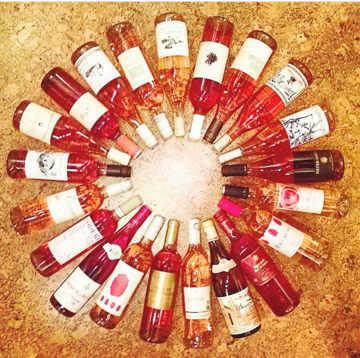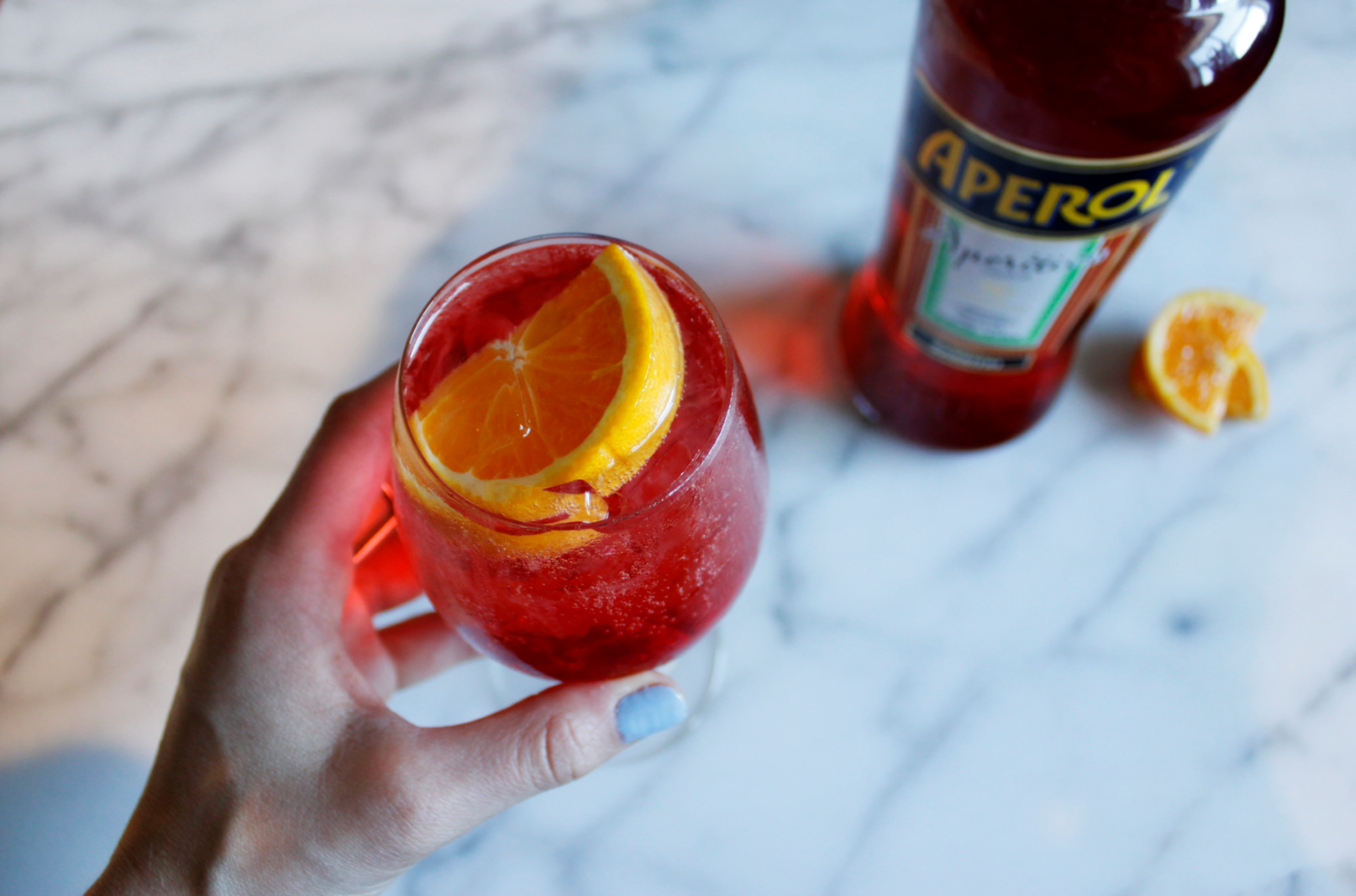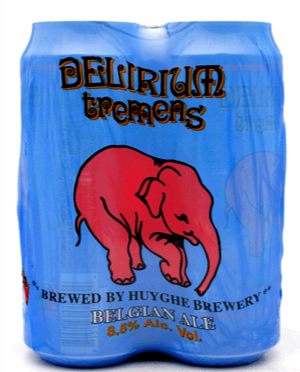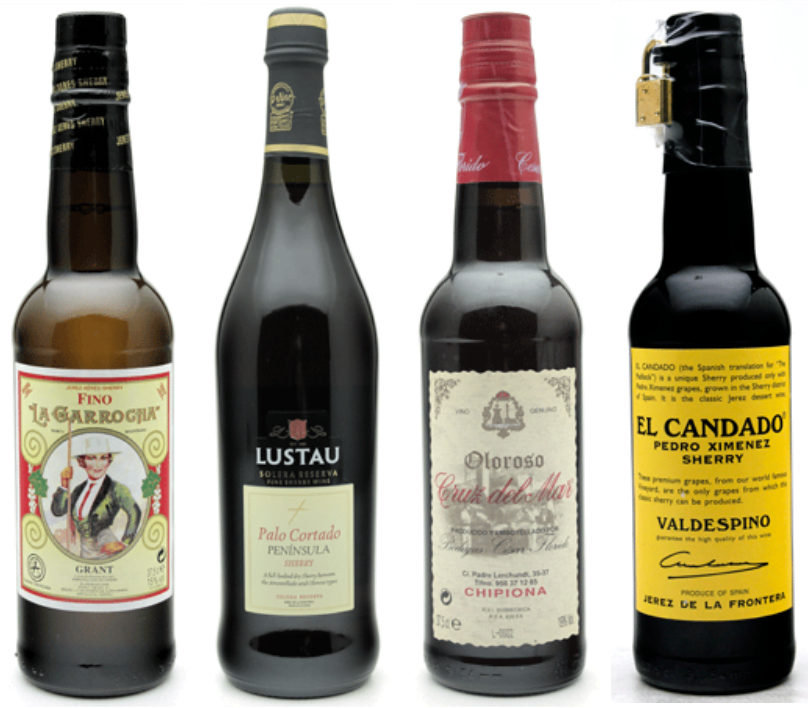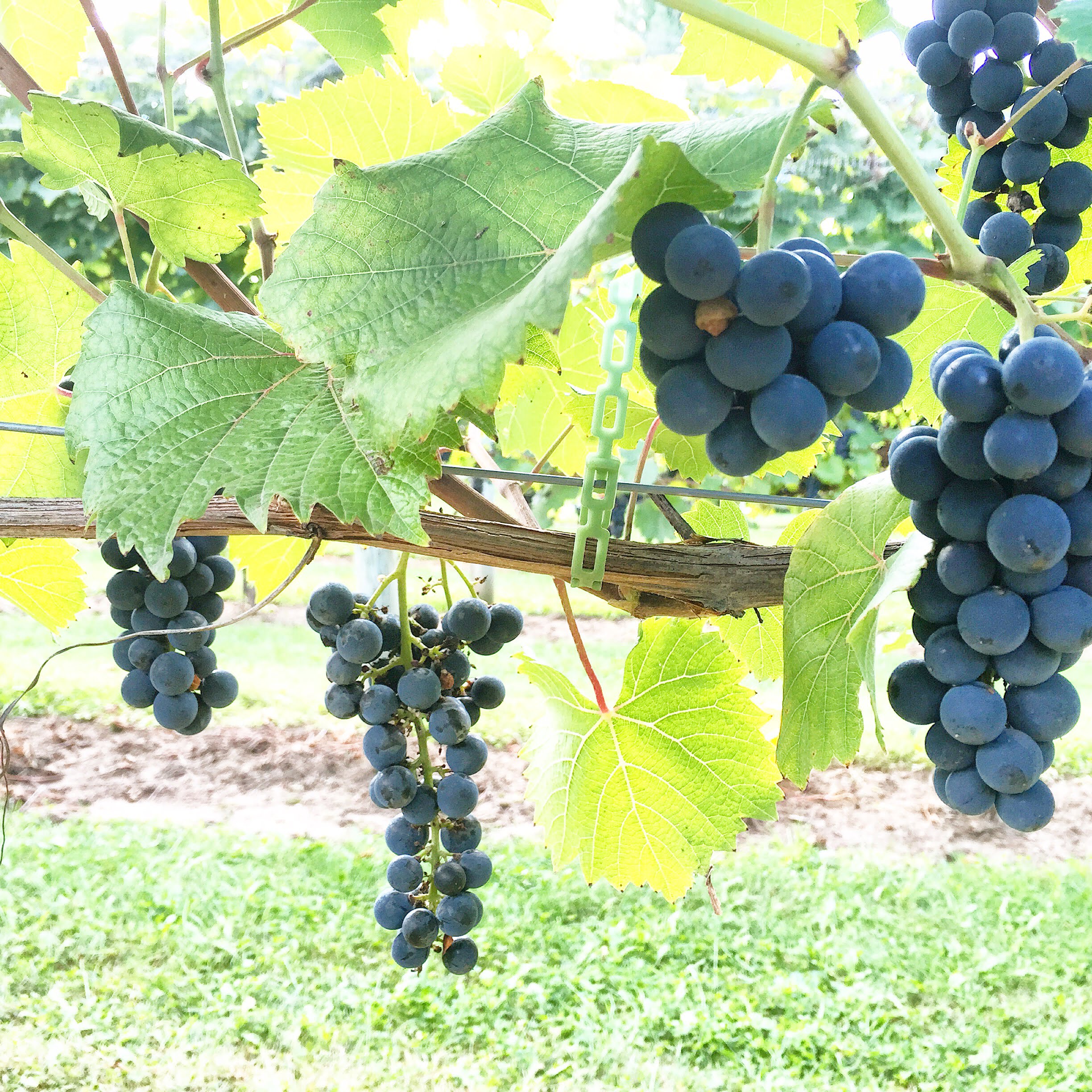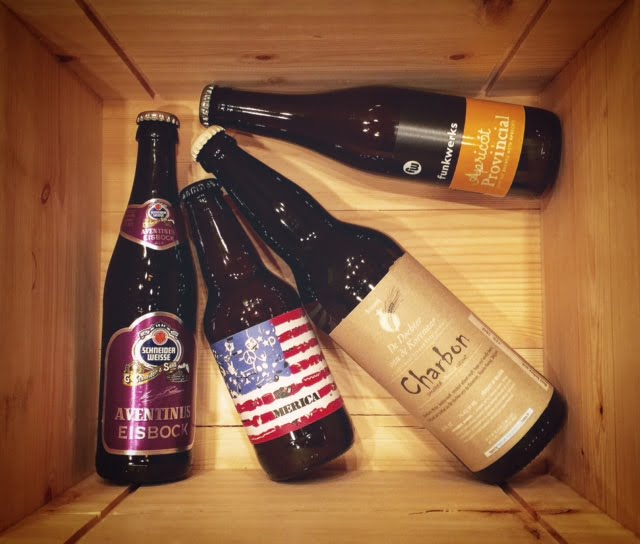In a way that no one could have ever predicted, rosé has become a cultural symbol of “the good life.”
Continue readingA Refresher Course on Spring Cocktails
Weather warming up? Time to cool down your cocktails.
Continue readingWow, Nice Cans!
Long gone are the days of tin cans, housing questionable brew, twanging with metallic sadness.
Continue readingDeconstructing Wine: Syrah
Syrah is a wild thing, and needs to be discovered on its own terms.
Continue readingCrossing The Line: Sherry, Baby!
Rest assured: there’s a heck of a lot more to Sherry than your grandma’s cheap, sweet stuff.
Continue readingNorthland Foragers: Vikre Distillery
Vikre Distillery forages for their own botanicals, uses Lake Superior water, and soaks in inspiration from their frigid northland terrain.
Continue readingRed, White, or Green?
It’s never been easier to buy organic wine. We’ve never had such a wide selection of varieties and styles from so many places at our fingertips—and it’s never been more confusing.
Continue readingDrinking Outside the Box
Do you occasionally find yourself stuck in a routine? Despite the great capacity of the human mind, we are capable of slipping into a state of comfortable apathy. You venture out for the weekly beer-run: grabbing the old stand-by IPA, a quaffing 12’er of lagers, perhaps a stout or porter to boot. The familiarity of these flavors soothes you into complacency.
There’s certainly nothing wrong with the tried and true approach. A well-worn path is smooth and easily traversed. But, do you wonder what you might be missing along the way? A new six pack of some weird style you hadn’t heard of? That bomber of a unique barrel-aged beer that was just outside your comfort zone? You are left wondering of what might have been. It’s time, I say, to “risk it for a biscuit.” Today’s craft brewers are creating some distinctly delicious beers that are breaking down conventional flavor barriers. Here are some of our favorite unique brews that are worthy of your attention.
Funkwerks Apricot Provincial – $9.99/4pk
The France 44 beer crew has been all aboard the Funkwerks train recently, with a compelling collection of farmhouse and sour ales that run with the best of ‘em. Apricot Provincial is a sessionable Belgian-style sour ale inoculated with lactobacillus. Fermented out with a Witbier yeast strain, the Provincial has a dry, spritzy shell that encapsulates juicy notes of apricot and lemon zest. Sweetness and acidity are in perfect harmony, this beer is the metaphorical transition to spring.
Prairie ‘Merica Farmhouse Ale – $12.99/4pk
These Sooner State suds-makers have long been playing around with farmhouse ales. ‘Merica is a single hop, single malt farmhouse ale that is partially fermented with Brettanomyces. “Brett” can be a nightmare for most vineyards, but when used judiciously, it can be quite intriguing in beer! Hallertau hops open it up with bright citrus and the typical noble aromatics, underpinned by funky hay-like notes. A tropical character on the palate melds gently with the Brett’s temperament. A crisp whack of bitterness brings everything together.
Schneider Aventinus Eisbock – $5.49/12oz
Eisbock – this German rarity has few examples, but deserves recognition! Beers of this category undergo a freezing process to separate out water, concentrating the other components, leading to increased strength. Freeze distillation can occur in beer because water has a lower freezing point than ethanol. This technique was (disputably) stumbled upon in Kulmbach, Germany when a barrel of bock beer was misplaced during an especially cold winter evening. Schneider’s Aventinus Eisbock clocks in at 12%, and boasts it beautifully. Aromas of plum, almond, and marzipan dance atop the much recognizable banana and clove notes found in German wheat beers. Its mahogany hue readies you for the full palate of banana bread, caramel, chocolate, molasses, rum cake, and nuts. This distinctive beer is nearly unparalleled.
Bent Paddle Imperial Kvass – $9.99/750ml
Kvass is a style with Slavic origin. It is most commonly made from rye bread and then flavored to the brewer’s choice, generally with fruits and mint. Though somewhat common in Russia and countries of the former Eastern Bloc, it is nearly impossible to find stateside. Bent Paddle’s iteration is of imperial strength and spiced with raisin, lemon peel, and spearmint. It shows a bright zestiness and full bready palate. You could say it kicks Kvass!
De Dochter van de Korenaar Charbon Smoked Vanilla Stout – $9.99/22oz
Somewhat of an anomaly, Dochter is a Belgian brewery with an inclination towards American styles. Charbon is a dry stout flavored with Madagascar and Réunion vanilla beans as well as Weyermann oak smoked wheat malt. It pours an extremely dark brown, bordering on black, with a lacy mocha-hued head. Smoke-infused aromas of chocolate, mocha, treacle and liquorice. The mirroring flavors are enhanced by woodsy smoke and a coffee-like bitterness. The interplay of sweet and smoke is captivating.
Off Color Bare Bear Finnish-Style Sahti – $10.99/4pk
Sahti is one of the oldest surviving beer styles, and in true Finnish fashion, is typically brewed in a sauna. Juniper branches are used as the filter medium to separate wort from grain, and hops are rarely used. The Finns would use baker’s yeast to do the deed, resulting in banana bread-like qualities. On top of all this, they used obscure outdated brewing vessels which are most uncommon today. Bare Bear is brewed in a traditional format brew house, but Off Color makes up for it. Juniper berries are added to the mash of barley and rye, with oak staves used to impart some tannin. Woody, banana and dark fruit aromas complement a malty, sweet and spicy flavor profile.
Sociable Burn Out Cucumber Habañero Cider – $9.99/4pk
Thought I was just going to talk about beers, didn’t ya? Well here’s a cider that spits hot fire! Your expectations will be smoked when it hits your lips. Fresh Freewheeler Dry Apple is infused with macerated cucumbers and habañero peppers during the conditioning process. The pepper’s heat just barely scratches your throat before a wave of cucumber crashes in to soothe you. Any of my skeptical thoughts were quickly diminished. Sociable, you’ve made me a believer!
Tuscany’s Last Frontier
The tiny region of Montecucco is being heralded as Tuscany’s last unexplored wine region.
Continue readingWine Lies Your Mother Told You, vol. 2
The Lie: Sulfites are bad for you.
Talking about sulfites in wine is like talking about politics: it’s uncomfortable, confusing, and sometimes it gets people a little too riled up, but it’s important. And although you’re your own person and you should make up your own mind about these things, isn’t it better to be as informed as possible before making yourself a martyr to NSA wines for the rest of your life?
I’m beyond (nervously) excited to write this post—sulfites in wine is a topic I’ve wanted to write about for years. I have a family member who is sensitive to sulfites, and it’s been an adventure figuring out which wines are safest to bring for Thanksgiving and Christmas. And if I had a nickel for every time a concerned customer asked me why they got headaches, rashes, and hives from certain wines (and they’re sure it’s because of the sulfites), I’d have enough money for med school.
I know how hard it is for wine lovers to navigate the murky (sometimes literally) waters of organic, biodynamic, “natural,” and NSA (no sulfites added) wines to fit their health restrictions. It takes a lot of time, willingness, and patience to learn about what sulfites are, why they’re used, and why everyone is so scared of them, but it’s worth it to try to understand! No one has all the answers and I’m certainly no doctor; and you are the only one who knows what your body likes and what it doesn’t. If this is your first time delving into the mysterious world of sulfites, may it be only the beginning of your journey towards greater knowledge!
Sulfites vs. Sulfur Dioxide
This is an important distinction, so listen up! Sulfites are a naturally occurring byproduct of the process of fermentation. Along with tannins, alcohol, sugar, and acidity, sulfites are an important part of preserving wine. Sulfites also protect wine from harmful bacteria and premature oxidation. Without sulfites, your wine would be downright disgusting, and probably dangerous to drink! But most times, sulfites on their own just aren’t enough, so the vast majority of winemakers worldwide will add sulfur dioxide, usually in the form of powder. This is done (either) right when the freshly-picked grapes enter the winery, and (or) just after the grapes are crushed and are beginning to ferment.
Sulfites are No Fad
Sulfites weren’t something suddenly invented by cut-rate California winemakers in the ‘80s, or by Australian winemakers wanting to make an easy buck with their critter wines. Ever since humans had a rough knowledge of the principles of alcoholic fermentation and how to make wine last longer than a few days (and believe me, this wasn’t the case for a good chunk of winemaking history), they’ve known the benefits of sulfites and used sulfur dioxide to their advantage. The Germans caught on early, and were the first (in 1487) to issue a decree permitting use of sulfur dioxide to help preserve their glorious (white) wines for years to come, thus revolutionizing the German wine trade in the 15th century. And you know what? It’s not just wine that contains sulfites—you’ll find them in ridiculously high amounts in your dried fruit, bottled lemon and lime juice, and sauerkraut, and in moderate amounts in a plethora of other foods and drinks.
The Boogeyman in Your Bottle
So, if sulfites are naturally occurring and sulfur dioxide has been around for centuries, why is it that people are scared to death of them today? Let me introduce an important character in our sulfite discussion: Strom Thurmond, former U.S. Senator of South Carolina. Whatever you may think of this stalwart public servant, he has several lasting legacies that persist well beyond his grave, with his most well-known bequeathal consisting of only two words: “Contains Sulfites.” Mr. Thurmond was, among other things, a staunch teetotaler. In fact, he was the head of the NAIII (National Institute of Alcohol Abuse and Alcoholism) in the 1970s—during the wave of so-called “neo-Prohibitionism.” In an effort to deter people from consuming alcohol, he succeeded in getting a ruling from the Senate stating that sulfite warnings were required to appear on all bottles sold in the U.S. To be clear, this wasn’t to make people aware of the health issues surrounding sulfites (which we’ll get to in a minute)—it was a fear tactic used to make people stop drinking alcohol. That’s the real reason we still have those two unfortunate words on all our wine labels.
Now, let’s get one thing straight: all wines contain sulfites. Remember, they’re naturally occurring—and there’s no magic machine to extract them. Therefore, you won’t find a single label in the United States that doesn’t bear “Contains Sulfites” on the back. (International winemakers are all required to stick this extra warning on shipments headed to the U.S., even though there’s no requirements to do so in their own country!) But here’s the kicker: to 99% of the population, sulfites are completely harmless. The only downside to extremely high amounts of sulfur in wine (which doesn’t happen often) is that it smells pretty rank when you open it—like a freshly struck match, or maybe rotten eggs. Only about 1% of people have a legitimate allergy to sulfites, and these people are more often than not severe asthmatics. Also more often than not, these people well aware of their situation and stay far away from wine. Reactions to sulfites in these situations usually include problems with breathing—shortness of breath and wheezing—not headaches, redness or itching.
What’s Really In a Glass?
So if you’re not a severe asthmatic and you haven’t been given a doctor’s note to swear off wine, what are all those headaches, rashes and hives after just one glass of wine all about? Truth be told, there’s a lot more in a glass of wine than just sulfites! Be aware of the levels of alcohol, sugar, and tannin in your wine. Especially if it’s a hefty wine with high levels of these components, make sure you’re eating food while you’re drinking, and above all, hydrate! Down a glass of water first before you reach for the bottle again! This is one of the most important factors in how wine will affect you, but also one of the easiest to forget. Of course, these are basic rules that we’ve all heard a million times and hate to hear again, but being conscious about these things saves you a heck of a lot of pain and misery later.
Some other things that could diminish your wine drinking experience include the proteins and histamines found naturally in a lot of wines, as well as other additives that some producers put in their cheaper wines to make them taste more appealing. Oak substitutes, Mega Purple grape juice concentrate, tannin powder, and specialized enzymes and compounds can help correct a lot of faults in a poorly made wine and make it taste pretty good, but the ugly truth is this: the more you mess with a wine, the more it can mess with you. And above all else, it’s absolutely worth it to have a conversation with your personal physician about what to avoid and what’s okay.
In plain English, what all of this means is that if you really want to get to the bottom of why you’re reacting to certain wines and would just like to find a few reliable wine choices that won’t make you rue the day, you’ve gotta do a little research. It also means you’ve probably got to start shopping the middle shelves instead of the bottom ones. I’m not saying well-made, cheap wines don’t exist (look for a post on that soon!), but many of those bottom-shelf wines are cheap for some not-so-glamorous reasons.
Wine is meant to give you pleasure. We live in a vinicultural age where almost anything is possible, and that has given us a multitude of delicious experiences to choose from. But because we have all these options, this requires us to be more knowledgeable about what we’re drinking. Sulfites are definitely there in your glass, but for the overwhelming majority of wine lovers, they’re not the culprit of your ills! Think of them as little helper compounds that only want you to enjoy your wine to the very last drop—whether it’s fresh from the bottling line or twenty years down the road.
Finally, one of the most pleasure-giving things about wine is the knowledge we can gain from it and about it. Knowledge is power, and knowledge will lead you to delicious, inspiring, well-informed wine experiences… with fewer regrets the next morning.
Three cheers for sulfites!
Resources for this post, plus more reading for you!
The Sommelier Prep Course by Michael Gibson
The Wine Bible by Karen MacNeil
A History of Wine in America, Vol. 2 by Thomas Pinney
Inventing Wine by Paul Lukacs
“The Truth About Sulfites” by Lettie Teague for the Wall Street Journal (March 13, 2015)
